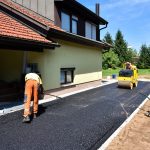Aging in Place Design: How to Design a Home That Will Age with You
Are you at the age when more and more of your friends are moving out of their homes and into senior living centers? Do your kids always stop by to check on you, and do you wonder whether you’re next to leave your home?
Good news–with an aging in place design, you don’t have to! Aging in place house plans allow senior citizens to age gracefully; they provide comfort and care for your elderly needs without uprooting you from the place you love so much.
Such a setup means you can maintain your independence and fulfill your aging needs at the same time. It provides a way to give you what your heart and your body really want.
If this sounds like a dream come true, here’s everything you need to know about home designing for seniors.
Adjust to Limited Mobility Now and Later
Aging in place is pretty simple to do in a one-story home, whereas living in a two-story home means you have a lot more work cut out for you. But, nothing is impossible when you put your mind to something and get creative about coming up with solutions.
Either way, start your redesign process by focusing on each major room in the house. This includes your bedroom and bathroom, the kitchen and dining area, and the laundry room. The living room, an office or spare bedroom, and even the foyer come last.
In the bed and bathroom, focus on how you can best get into and out of your bed and the shower. Think about how high off the ground your mattress is and whether or not you need steps by the bed. Also consider getting a seating area installed in the shower, or at least an adjustable handheld showerhead.
In the kitchen and dining area, make sure you have plenty of comfortable places to sit and work. You should be able to sit when chopping vegetables and washing plates in order to preserve the strength of your body every day and over time. More so, small adjustments like changing the placement of the oven and stove controls and getting an aging-friendly fridge can do wonders for you.
Then, there’s the laundry room.
Set up this space so that the washer and dryer are next to each other instead of stacked. Have the doors facing you instead of on the top part of each appliance for easy access.
Also, raise the washer and dryer a foot or two off the ground so you’re not always bending over to do your loads. Apply this same principle to the oven if you can, or find a way to install a wall oven or one with a side-swing door.
Prevent Possible Injuries
As you’re going through all the major areas of the house and every other room too, be proactive about your aging in place design. If you have stairs, consider getting some sort of electric chair to get up and down in, or at least installing another set of handrails.
Take a second to consider the flooring material as well. It’s better to have carpet on the ground for a soft landing in case you fall and to keep every room on the same level (no steps up or down) for additional safety purposes.
An injury may also happen if you’re walking around in the early morning or evening time without a light in each room. Make sure there are light switches at every access point of a room so that you always have light when going in and out of a certain space in the house.
Every closet, the front door to the house, and the back porch area should be properly lighted, too. Also, investing in home security for each entryway in the house wouldn’t be a bad idea, either.
Prioritize Comfort and Function
While the aging in place design process may sound a little extensive, remember that it’s for your best interest. You have to make decisions based on maximizing comfort and function and minimizing risks.
Think about it: having oven and stove controls at the front of these appliances makes it less likely for you to burn yourself. Sitting in the shower will prevent slips and even just one step to help you get in and out of bed can ease any unnecessary stress on the body.
All of these efforts come together to create a safe, comfortable home. But, the aging in place process doesn’t stop there. Other ways to improve your comfort include:
- installing peddle-controlled faucets
- lowered kitchen cabinets
- open shelving
- door levers and handles for cabinets (instead of knobs)
- having a place outside the front door to put packages down
You have to pay attention to every little detail. The more you do this now, the less you’ll have to worry about later. While you’re at it, you may want to inquire about energy-efficient home solutions or Assistance In Home Care.
Energy-efficient solutions allow you to cut back on costs and spend your money on things like retirement and life insurance. You can also use your savings to create more aging in place improvements as time goes on.
Home care assistance, on the other hand, brings the benefits of senior living to you. These services give you someone you can lean on when aging gets too difficult, without having to give up your precious home.
Create the Best Aging in Place Design for Your Home
Coming up with the perfect aging in place design kind of happens the way aging does–little by little. All the right ideas won’t come to you right away. You may have to talk to a design specialist or even consult your doctor before finalizing all your plans.
But, you’ll still end up with the aging process you really want–the one you can enjoy at home. For more insights about aging and general health, click here.





